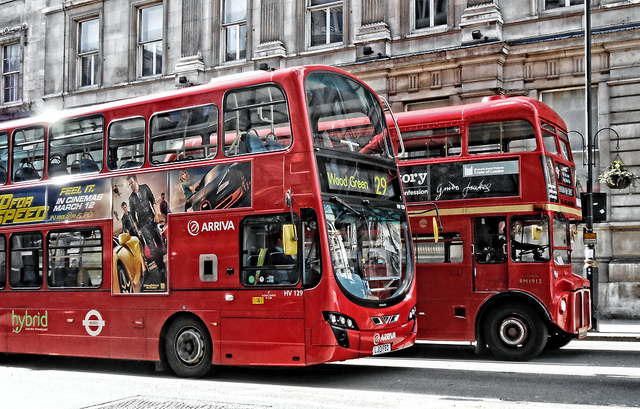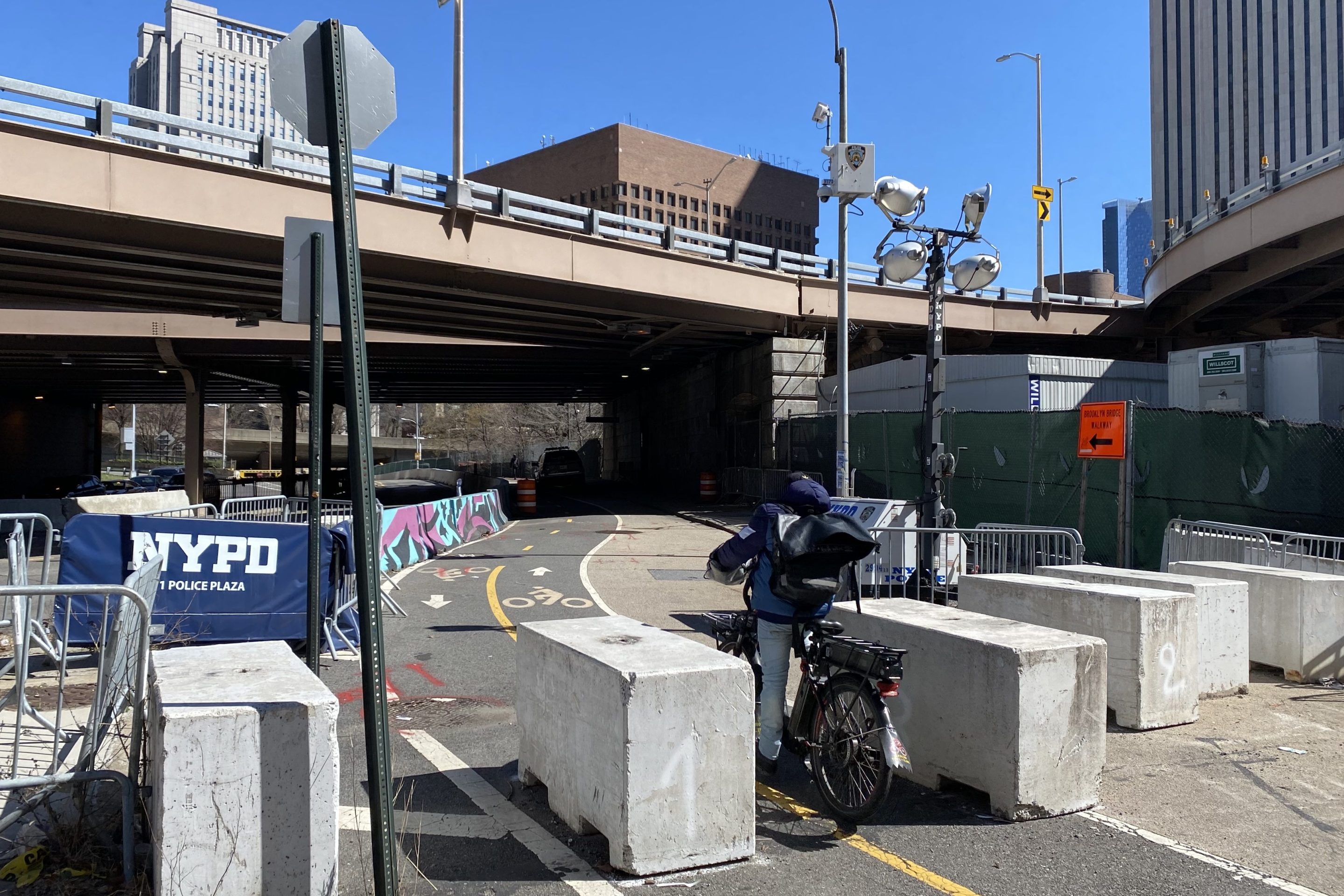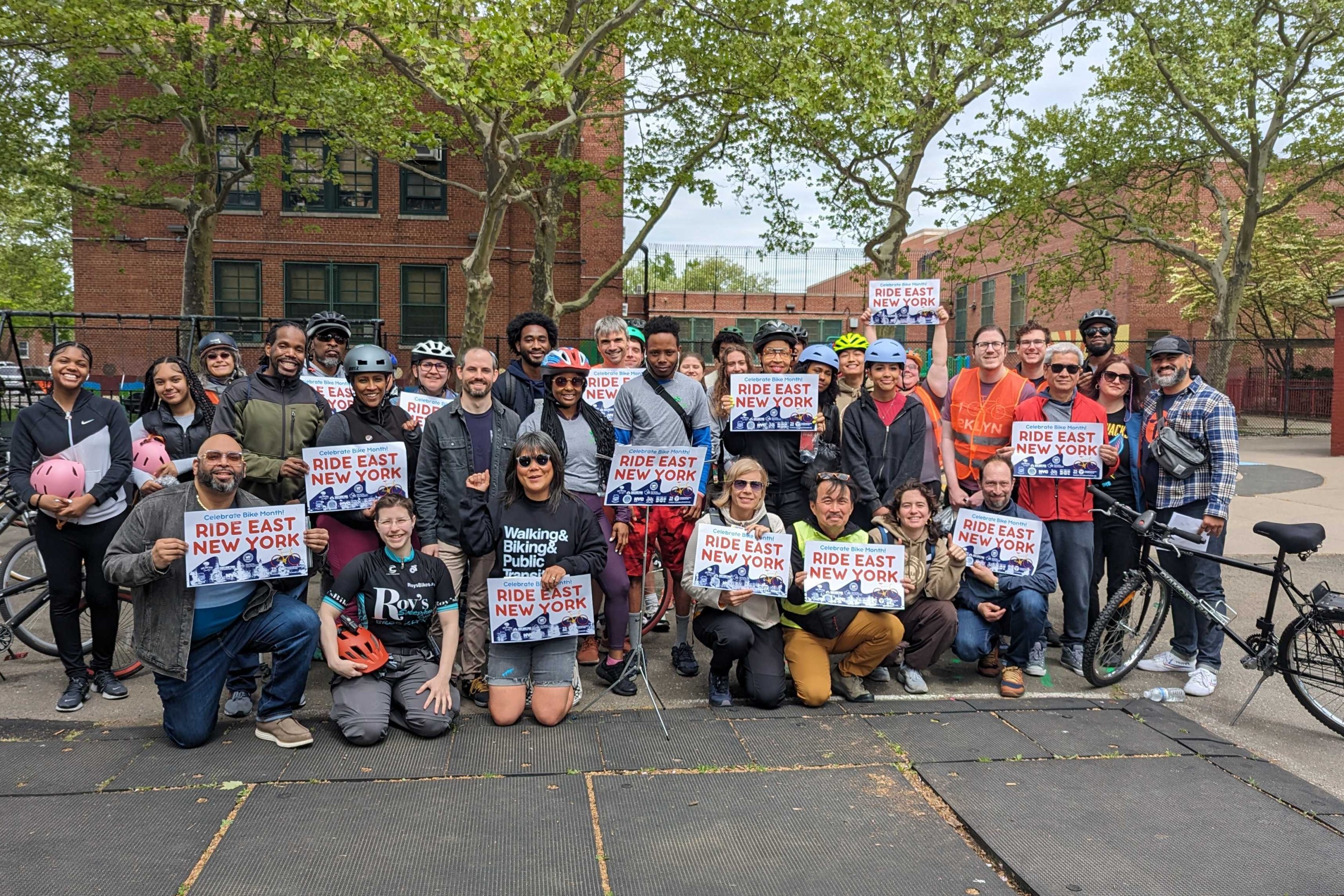There's a symbiotic relationship between road pricing and better bus service. Congestion pricing can speed up buses and reverse the decade-plus decline in bus ridership in New York. At the same time, other bus service improvements should complement congestion pricing to make transit more effective for people who leave their cars at home.
In a new paper, the Tri-State Transportation Campaign looks at how London, Stockholm, and Singapore rolled out congestion pricing systems and what New York can learn from each city. A common thread is the addition of bus service in tandem with the introduction of a congestion fee.
In New York, the sustained drop in bus ridership is the most alarming transportation trend in the city. The biggest drops have been in Manhattan and Brooklyn, where congestion pricing would do the most to relieve the traffic bottlenecks that slow down buses. To make the transition to a congestion charge as smooth as possible -- and to get more value out of the reduction in traffic -- New York will have to invest in better bus service and transit-priority treatments on the streets.
That's what London did before and after Mayor Ken Livingstone implemented a congestion charge in 2003, Tri-State reports.
The day that the fee took effect, London put 300 new buses into service, increasing frequency and capacity. The number of buses crossing the congestion charge cordon increased by 23 percent. The city also updated and extended bus routes, and carved out new bus priority lanes to bypass traffic.
The autumn after the congestion charge went live, bus ridership within the cordon zone increased 38 percent compared to the previous year.
For officials in Stockholm and Singapore, improving transit was not a primary goal of congestion pricing. Still, to meet growing ridership demand, both cities took steps to increase bus frequency and service quality. Stockholm purchased 197 new buses and added 16 new bus routes, according to Tri-State. Singapore officials increased bus frequency and added high-occupancy vehicle lanes to prioritize buses and vans.
"The key lesson of congestion pricing is that in order to get drivers of all socioeconomic groups out of private or for-hire vehicles, affordable, accessible transportation options are necessary," Tri-State writes.
These steps were implemented both in preparation for a congestion charge and as a result of its effects. London, for instance, continued to carve out street space for bus lanes and bike lanes after the reduction in traffic made those changes more politically palatable.
The deplorable state of subway service is getting a lot of attention in New York, as it should. But in addition to upgraded subway signals, Tri-State argues that congestion pricing should be used to accelerate surface transit improvements: new bus lanes, fare technology that enables all-door boarding, signal priority for buses at intersections, better bus stops, and electric buses to reduce pollution.
These are, not coincidentally, many of the same recommendations that advocates with the Bus Turnaround Coalition have been urging the MTA and NYC DOT to adopt since 2016.
If Governor Cuomo and Mayor de Blasio decide to put some political muscle into transit this year, they can use congestion pricing in tandem with bus improvements to make New York's car-jammed streets work better for everyone.





